

SPECIAL REPORTS
Initiated in 2014, ASOR’s Cultural Heritage Initiatives (ASOR CHI) is an international collaboration of scholars and institutions who work under the auspices of ASOR. Through two cooperative agreements with the U.S. Department of State and with the generous support of non-federal organizations and donors (especially the Getty Conservation Institute, The Whiting Foundation, and the Kaplan Fund), ASOR CHI undertakes projects to document, protect, and preserve the cultural heritage of war-torn Syria, northern Iraq, and Libya. Hundreds of significant heritage sites have been damaged since fighting began in 2011. Although the destruction of cultural property represents only part of the humanitarian crisis, these harmful actions threaten our common world heritage and cultural diversity. We have an ethical obligation to respond, and our project is part of an international effort to work with Syrians, Iraqis, and Libyans (and other peoples) to protect their heritage and cultural identity.
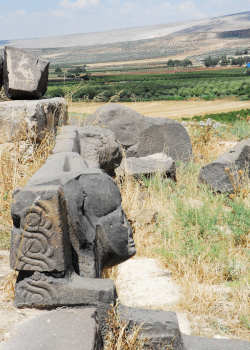
Current Status of the Tell Ain Dara Temple
ASOR CHI geospatial analysis indicates that an explosion damaged the Ain Dara temple in northwest Syria on or before January 22, 2018. The Ain Dara temple is the best-preserved example of Syro-Hittite religious architecture from the late second and early first millennia BCE. It is elaborately decorated with basalt sculpture and reliefs. Larger-than-life human footprints carved into the temple’s stone thresholds are unique to the building. It is also considered to be a close parallel to the contemporary Temple of Solomon, which is known from descriptions in the Old Testament.
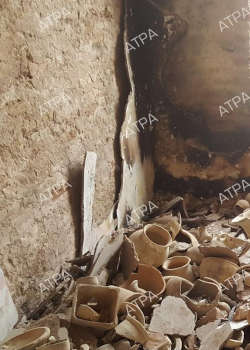
Current Status of the Raqqa Museum
The Raqqa Museum and its storerooms in nearby Heraqla are dedicated to the preservation and exhibition of the cultural heritage of Raqqa Governorate. Though small in comparison to the museums in Damascus and Aleppo, the Raqqa Museum contains an important collection of excavated remains that date from prehistory to the modern day. Prior to the start of the Syrian conflict in 2011, the museum was an important local employer and a symbol of civic pride and Raqqawi identity.
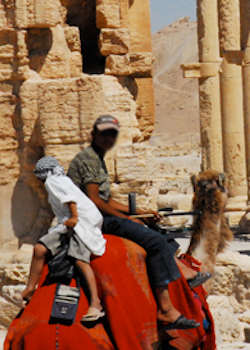
The Recapture of Palmyra
The region of Palmyra and modern Tadmor was taken from ISIL militants by a coalition of Syrian, Russian, and Iranian military forces on March 24, 2016. This report will provide a summary of what is known to have taken place in the area since September 2015, including a synopsis of the humanitarian and military situation since then and the effects the conflict has had on the cultural heritage of ancient and modern Palmyra. This report is a preliminary analysis of a rapidly developing event, and initial findings may be subject to change as further information is revealed. For a more complete summary of the situation in Palmyra, please refer to the upcoming Weekly Report 85–86 (reporting period ending March 29, 2016) and Weekly Report 87–88(reporting period ending April 12, 2016).
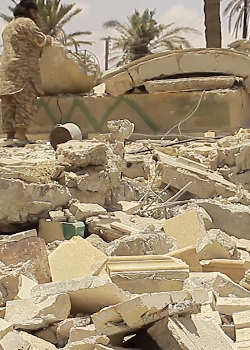
Update on the Situation in Palmyra
Since its capture by ISIL militants in May 2015, the region around the ancient city of Palmyra (modern Tadmor) has been in the midst of a humanitarian crisis, which has escalated dramatically in recent weeks. This report will provide a summary of the current situation in Palmyra and the effects of the conflict on its people and cultural heritage. Atrocities include attacks on civilians and mass abductions. Intentional damage to the cultural materials of the local populations is widespread, including the destruction of Islamic and Christian religious sites, as well as severe damage to the architectural remains within the UNESCO World Heritage Site of Palmyra. Confirmed damage at this archaeological site includes the destruction of the Baalshamin Temple, the Temple of Bel, and at least seven tower tombs within the Valley of the Tombs.
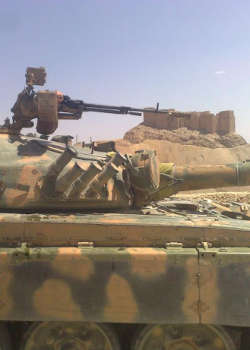
Palmyra: Heritage Adrift
This special report by Cheikhmous Ali (Association for the Protection of Syrian Archaeology) provides a detailed account of damage done to the UNESCO World Heritage Site of Palmyra between February 2012 and June 2015.
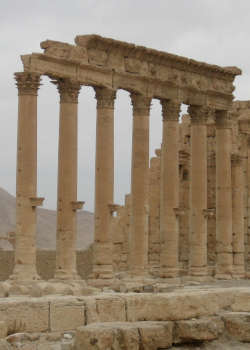
Special Report on the Importance of Palmyra
The ancient city of Palmyra stands out as one of the most remarkable archaeological sites in Syria and, indeed, the world. Following the takeover of the site and the adjacent town of Tadmor by ISIL, Palmyra has been in the news daily. The purpose of this report is to provide a concise introduction to the site and its importance so that the international community can better understand why it should be saved.
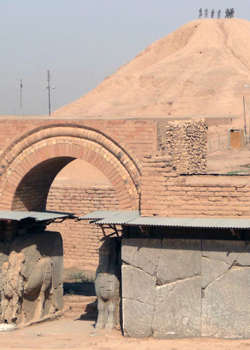
Report on the Destruction of the NW Palace at Nimrud
A video released by ISIL on April 11, 2015, provided vivid and shocking documentation of the deliberate destruction of relief sculpture and standing architecture at the famous archaeological site of Nimrud, located in northern Iraq near the city of Mosul. The video documents ISIL militants vandalizing, smashing, and piling up relief slabs using hand tools, power tools, and vehicles; it then shows the detonation of the relief slabs and large parts of the Northwest Palace using a series of barrel bombs. This report provides a brief introduction to the site of Nimrud and summarizes the current state of knowledge regarding the destruction of the Northwest Palace.